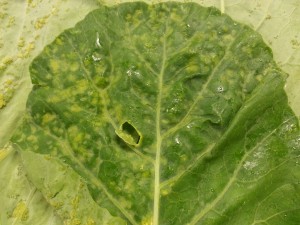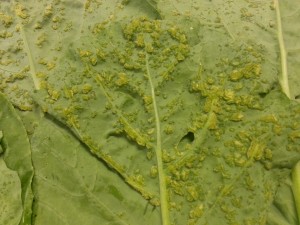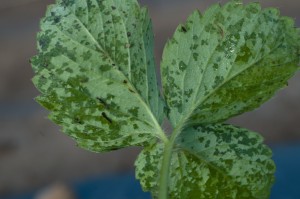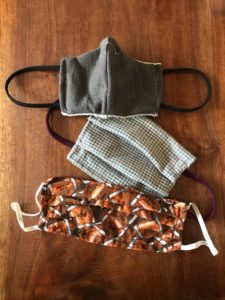Edema is often expressed as off-color swellings or galls that appear on leaves and stems. Edema develops when epidermal cells hold excessive water due to a slowing of evapotransporation when hot, muggy days are followed by cooler, wetter weather. Edema develops because the plant takes in more water (due to a high soil moisture contant) faster than it can get rid of it through evapotranspiration causing cells to rupture which results in the blistering of the leaves. Edema is strictly caused by environmental factors and can appear whenever these conditions are met. Properly monitor soil conditions, irrigation cycles, and the weather to avoid over irrigating on warm, hot early spring days, especially when quick cold fronts/temperature drops and cloudy weather are expected.

Symptoms of edema on top side of
collard leaf.
Note the off-color appearance of leaf surface.

Edema, bottom side of collard leaf.
Note irregular, “corky” appearance due to leaf cell rupture.



